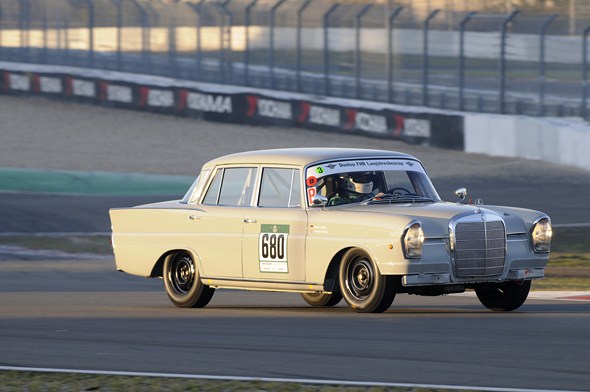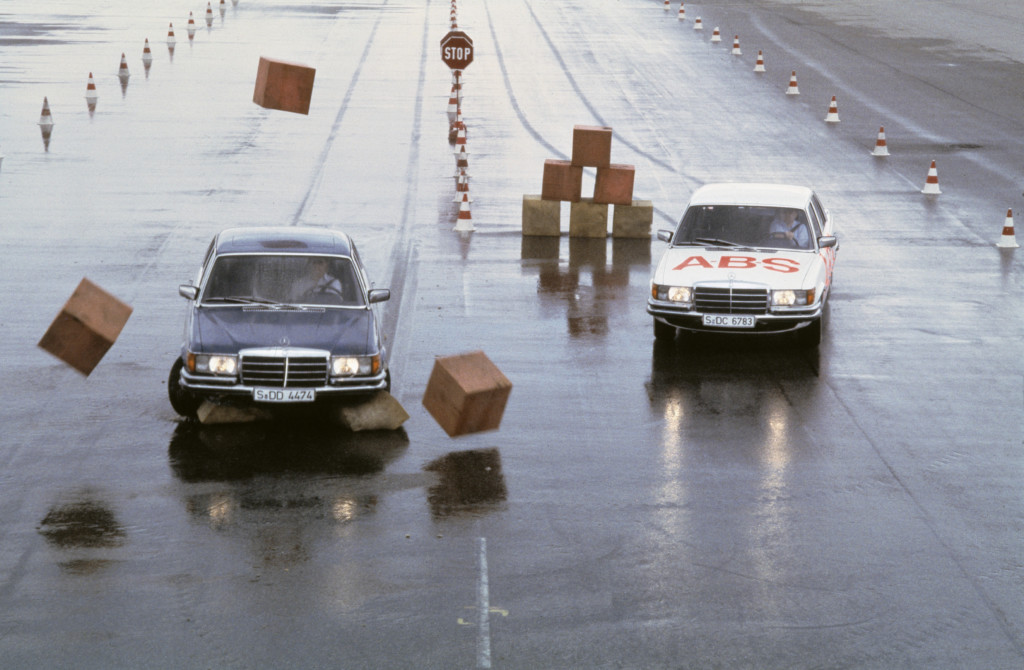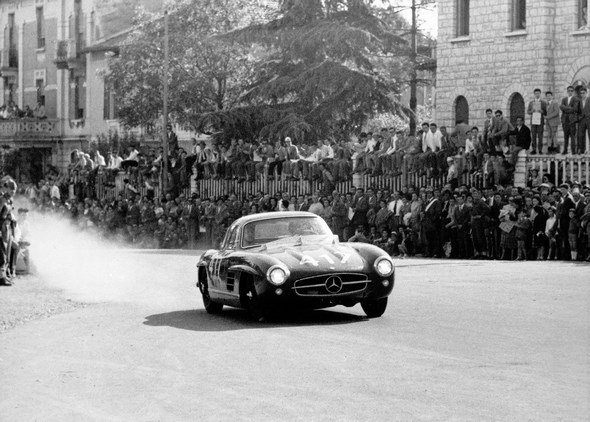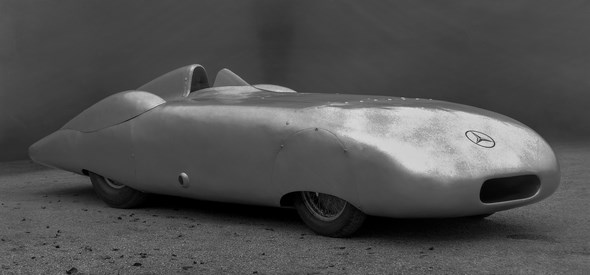Mercedes-Benz Classic at Goodwood Festival of Speed 2012


- Four Mercedes-Benz motorsport racing cars to drive in legendary Hillclimb at Goodwood House
- Official slogan for the event this year: “Young Guns – Born to Win”
- Mercedes-Benz Classic is celebrating “60 years SL” as well as “75 years W 125”
Stuttgart – Mercedes-Benz Classic is going to send four racing cars from the company’s own collection to take part in the 1.86 kilometre Hillclimb at the Goodwood Festival of Speed. The event is scheduled from 28 June – 1 July 2012 with the slogan “Young Guns – Born to Win”.
The Goodwood Festival of Speed in the south of England regards itself as the largest motorised garden party in the world. Every year vehicles ranging from 19th century steam driven coaches to the legendary “Silver Arrows” from the 1930s right up to the latest Formula One shooting stars all meet up for a weekend in the extensive park at Goodwood House.
Breathtaking speed, power and style, visionary technology and awareness of history, but also elegance and luxury – these are the strengths of the Mercedes-Benz brand – and it is just these aspects which combine to give the car the fascination it exerts, year after year, on the good 150,000 enthusiastic fans visiting the Festival of Speed.
This year Mercedes-Benz Classic is entering legendary racing cars in the race. The Mercedes-Benz W 125 which was constructed for the 1937 season is a reminder of the early successes of the “Silver Arrows”.

As the ancestor of the SL-series, the 300 SL racing car (W 194) from 1952 marks the start of an era. In 2012, Mercedes-Benz Classic is celebrating the 60th anniversary of the SL. The 1963 tail fin saloon 220 S (W 111) which has been reconstructed for use as a racing car at historical motorsport events on race circuits will be making its debut in Goodwood. In addition, the 1997 Mercedes-Benz CLK-GTR with about 600 hp (441 kW) will be representing more recent motorsport history.

As festival tradition demands, Mercedes-Benz racing cars will be driven on the Hillclimb at Goodwood by well known drivers such as likely candidates Paul Stewart, Klaus Ludwig, Jochen Mass, and Bernd Schneider.
From “wild young kids” to outstanding world stars
Ever since the early days of car racing now and again, there have been successful newcomers in the pit lane and this year’s festival slogan “Young Guns – Born to Win” is in commemoration of their prowess. Time and again there have also been “wild young kids” at Mercedes-Benz who celebrated outstanding successes and turned into world stars almost overnight.
In 1990, Michael Schumacher – who later won the Formula One World Championship seven times – was a member of the Mercedes Junior Team along with the others in his age group like Heinz-Harald Frentzen and Karl Wendlinger and the races they entered included the Le Mans race. Lewis Hamilton made his debut in the Formula One in 2007 and was runner-up in the world championships in the cockpit of the McLaren-Mercedes at first go. In the following year, the Briton was at that time the youngest Formula One World Champion ever.

The skill of the drivers plays an important role in the brand’s successful motorsport history. The numerous racing successes at Mercedes-Benz are, to a great extent, due to the untiring efforts of the engineers to find new solutions for the races. Only drivers with superior technology at their disposal will cross the finishing line as winners.
From art to the premier league in motorsport
The Festival of Speed was first held in 1993 and was invented by Charles Gordon-Lennox, Earl of March and Kinrara. The active and enthusiastic car racing fan and host at Goodwood is addressed as Lord March. The foundation stone for the festival was already laid by his grandfather, the then Earl of March and 9th Duke of Richmond. He was very well known in England as car designer, engineer and racing driver Freddie March.
For the first time in 1936 he organised a private Hillclimb in the park of Goodwood House. His grandson revived this tradition more than 50 years later.
From its early beginnings in 1993, a festival has developed which is regarded as one of the absolute cultural highlights in the international automotive calendar. For three whole days, racing cars and sports cars from all eras play their symphony of speed along the route – and that also includes the premier league in motorsport.
Some of the current Formula One teams have announced their participation at Goodwood for the 2012 festival. Since 2007, a 2.5 kilometre-long rally route for rally cars has supplemented the Hillclimb.
Strollers and automotive fascination
The Festival of Speed is not only a fascinating experience as a motorsport event; it is also an elegant promenade along automotive cultural highlights. From the pits, open to all visitors, to the car shows in the park grounds up to the automotive works of art which the British sculptor Gerry Judah creates anew every year.
His temporary sculptures placed directly in front of Goodwood House always focus on one brand and its special vehicles. At the Festival of Speed in 2001, the theme was the Mercedes-Benz 300 SL.
Goodwood Festival of Speed 2012: the cars on the Hillclimb
Mercedes-Benz W 125, 1937
In 1937, Daimler-Benz introduced a completely new racing car. The W 125 was built according to the ideas of its constructor Rudolf Uhlenhaut, technical manager of the newly set-up racing department since mid-1936. The backbone of the car was a sturdy nickel-chrome-molybdenum steel frame with four cross members. The torsional strength of the vehicle without its engine increased to three times that of its predecessor, the W 25.
The W 125 was the first racing car from Daimler-Benz where the compressor was installed after the carburettor which meant that the final mixture was compressed. The 2Silver Arrow” was fitted out differently depending on the racing circuit: tank capacity, carburettor, supercharger, tyres and rim size, tyre profile and its overall dimensions varied from race to race.
The car’s premiere was on 9 May 1937 at the Tripoli Grand Prix. The whole season was extremely successful – Rudolf Caracciola, Hermann Lang, and Manfred von Brauchitsch drove from one prestigious victory to the next.
Construction year: 1937
Cylinders: R8
Cubic capacity: 5660 cc
Output: 600 hp (441 kW)
Top speed: over 300 km/h
Mercedes-Benz 300 SL (W 194), 1952
On 15 June 1951, the starting signal was given at Daimler-Benz for the construction of a three-litre sports car with an aluminium body. By March 1952, a prototype of the Mercedes-Benz 300 SL – originally designed purely for racing – was presented to the press. It was the forerunner of the legendary 300 SL (W 198) which was presented in 1954 as the “gull wing” coupé.
The complex tubular frame construction of the 300 SL originally did not allow conventional doors to be installed. Because of this, experimental engineer Rudolf Uhlenhaut envisaged winged doors – in the first prototypes they are only small hatches reaching down to the bottom edge of the side windows.
It was only the sixth of the ten original 300 SL that was fitted with larger doors extending downwards to the mid-flanks in keeping with the Le Mans regulations.
In its first race, the Mille Miglia in 1952, the 300 SL achieved a noteworthy second place. In the same year, it succeeded in coming in first and second in the more than 3,000 kilometre long Carrera Panamericana in Mexico and it celebrated a brilliant double victory in Le Mans.
The 300 SL entered in the same year for the Hillclimb at Goodwood is now owned by the McCaw family in the USA. It is the original vehicle which won the 24-hour race of Le Mans in 1952.
Construction year: 1952
Cylinders: R6
Cubic capacity: 2995 cc
Output: 170 hp (125 kW)
Top speed: about 240 km/h
Mercedes-Benz 220 SE (W 111), 1963
Following the era which came to an end in 1955 with its world championships in the Formula One and with racing sports cars, there followed a period in which Mercedes-Benz was successful in international long distance races and rallies.
At the beginning of the 1960s, the brand was very active especially with “tail fin” saloons with six-cylinder engines (220 SE and 300 SE), and these also served as models for the construction of the Mercedes-Benz 220 SE (W 111) used at Goodwood.
It is very typical for these years that the competition vehicles and production models were technically very close to each other. The most common modifications included making the chassis elements and parts of the body more rigid, increasing the tank capacity and adapting engine characteristics to the intended use.

The light grey “tail fin” car used in Goodwood in 2012 dates back to 1963 and was remodelled last year as a racing circuit car at the Mercedes-Benz Classic Center for historical motorsport events. The 220 SE celebrated its premiere in the final race of the season for the long distance cup presented by the Drivers’ Association for Historical Motor Racing (FHR, Fahrergemeinschaft Historischer Rennsport e. V.) in October 2011 at the Nürburgring.
Construction year: 1963
Cylinders: R6
Cubic capacity: 2195 cc
Output: 120 hp (88 kW)
Top speed: about 170 km/h
Mercedes-Benz CLK-GTR, 1997
The Mercedes-Benz CLK-GTR is a racing touring car which was developed especially by Daimler-Benz in cooperation with AMG for the FIA GT Championships founded in 1997. The CLK-GTR is fitted with state-of-the-art racing technology and a centrally located engine.
The 12-cylinder, 6-litre engine has an output of 441 kW (600 hp). According to the FIA regulations, apart from engine, ignition and injection control, the racing cars are not allowed to have any electronic assistants such as anti-lock braking system (ABS), acceleration slip control (ASR) or an active suspension.
As a production line racing car in a batch of 25 licensed for road use, the CLK-GTR could also be purchased by interested customers with no racing ambitions. However, at the time the Mercedes-Benz CLK-GTR cost 3,074,000 German marks (roughly 1,571,711 Euros) and was the most expensive production run car in the world.
Construction year: 1997
Cylinders: V12
Cubic capacity: 5986 cc
Output: 441 kW (600 hp)
Top speed: 345 km/h
Goodwood Festival of Speed 2011: Driver Portraits
Paul Stewart
Date of birth: 29 October 1965
Former Formula driver Paul Stewart, son of the triple Formula One champion Jackie Stewart, gained his early motorsport successes in the Formula Ford 2000. In 1988, he founded the Team Paul Stewart Racing and followed up his early successes by winning the British Formula Three Championships in 1989 and 1990, and the Formula 3000 from 1991 to 1993.
During this time, he was teammate to Marco Apicella in 1991, David Coulthard in 1992, and Gil de Ferran in 1993. After that, despite his great successes, he said farewell to his active career in motorsport and from 1994 on busied himself as manager of his team.
Between 1992 and 1994 as well as 1996 to 2000, the team won eight Formula Three Championships. In 1996, together with his father Jackie Stewart, he founded the Team Stewart Grand Prix which took part in the Formula One from 1997 to 1999. At the end of 1999, Ford took over the team which then continued in the 2000 season under the name Jaguar Racing, and then finally continued from 2005 on under the name Red Bull Racing.
Klaus Ludwig
Date of birth: 5 October 1949
Known to his fans as “King Ludwig”, Klaus Ludwig won the DTM championship three times. He was born in Bonn in 1949 and his career in motorsport began at of the 1970s with slalom racing, orientation racing and touring car racing.
Among his first great successes were the titles won in the German Motor Racing Championships (DRM) in 1979 and 1981 as well as victories in the 24 hours of Le Mans in 1979, 1984, and 1985. Ludwig came to the German Touring Championship (DTM) in 1985 where he originally started as a works driver for Ford, winning his first title in 1988.
In 1989 he changed over to the AMG-Mercedes team and in the following years until 1994 he won two championship titles (1992 and 1994, runner-up in 1991) and a total of 19 races. In 1995 and 1996, he drove in the International Touring Car Championships (ITC) for Opel’s Team Rosberg. Afterwards, he returned to AMG-Mercedes and won the driver and team trophy at the International FIA GT Championships in 1998 together with Ricardo Zonta.
Officially he finished his career as a racing driver after this success, but in 2000 Ludwig returned for the start of the new German Touring Masters (DTM), finishing both the season and his racing driver career by coming in third in the overall placings with a Mercedes-Benz CLK.
Jochen Mass
Date of birth: 30 September 1946
Jochen Mass was originally a seaman, but then in 1968 he started his very varied career in motor racing, taking part in touring car races for Alfa Romeo and driving for the Ford works team from 1970 to 1975. During this period he won the 24 hours of Spa-Francorchamps in 1972.
Parallel to this, he took part in the Formula Two (1973) and in 105 Formula One Grand Prix races (1973/74 with Surtees; 1975 to 1977 with McLaren; 1978 with ATS; 1979/80 with Arrows; 1982 with March). Following his German Sports Car Championship (DSM) title in 1985 and his experience as a works driver for Porsche until 1987, he joined the Sauber-Mercedes works team.
He drove for this team in Group C until 1991. In the new Silver Arrow, the Sauber-Mercedes C 9, Jochen Mass then won the 1989 24 hours of Le Mans in the team with Manuel Reuter and Stanley Dickens and was runner-up in the world championship of the same year. Three years later, in 1992, Mass joined the DTM team management. Right up to the present day, Jochen Mass drives regularly for Mercedes-Benz at historical events.
Bernd Schneider
Date of birth: 20 July 1964
Five-times DTM champion Bernd Schneider was born in 1964 in St.
Ingbert, Saarland, and his first racing successes were in karting and the Formula Three. Schneider also took part in the Formula One, the 24 hours of Le Mans and the FIA GT Championships, winning this title in 1997. But the DTM became the stage on which he celebrated his greatest triumphs.
From 1992 on, Schneider drove for the AMG-Mercedes team and won the German Touring Car Championship for the team in 1995 after being third in the overall placings in 1992 and 1993. After the DTM was revived as the German Touring Car Masters in 2000, Schneider won in the years 2000, 2001, 2003, and 2006, and he was also runner-up in the championships in 2002.
Bernd Schneider has remained closely connected to the brand Mercedes-Benz right up to the present day as a test driver and ambassador for the brand with the star.





